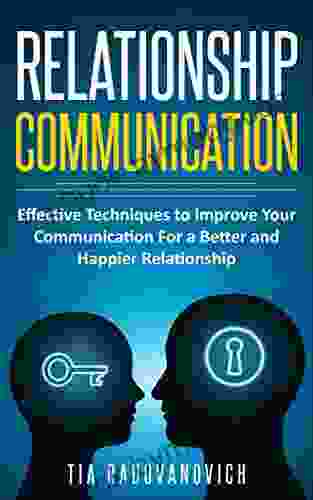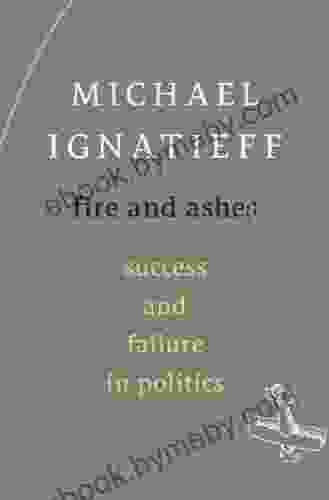Acute and Emergency Care in Athletic Training: The Ultimate Guide

4.5 out of 5
| Language | : | English |
| File size | : | 240029 KB |
| Text-to-Speech | : | Enabled |
| Screen Reader | : | Supported |
| Enhanced typesetting | : | Enabled |
| Print length | : | 470 pages |
| Lending | : | Enabled |
As an athletic trainer, you are responsible for the health and well-being of athletes. This includes providing acute and emergency care for injuries that occur during sports and other physical activities.
Acute care is the immediate treatment of an injury. This may involve stopping the bleeding, splinting a broken bone, or applying ice to reduce swelling. Emergency care is needed for more serious injuries, such as those that involve a loss of consciousness, severe bleeding, or difficulty breathing.
This comprehensive guide will provide you with the knowledge and skills you need to provide acute and emergency care for athletes. You will learn how to assess injuries, perform first aid, and transport injured athletes to the hospital.
Chapter 1: Assessment of Injuries
The first step in providing acute and emergency care is to assess the injury. This involves gathering information about the athlete, the injury, and the mechanism of injury.
To assess an injury, you will need to ask the athlete the following questions:
- What is your name?
- What is your age?
- What sport do you play?
- What happened?
- Where does it hurt?
- When did the injury occur?
- How severe is the pain?
- Have you had any other injuries?
- Are you taking any medications?
Once you have gathered this information, you will need to examine the injury. This involves looking for signs of swelling, bruising, deformity, and tenderness.
Based on your assessment, you will need to determine the severity of the injury and decide on the appropriate course of treatment.
Chapter 2: First Aid
First aid is the immediate treatment of an injury. This may involve stopping the bleeding, splinting a broken bone, or applying ice to reduce swelling.
The following are some of the basic first aid techniques that you should know:
- How to stop bleeding: Apply direct pressure to the wound with a clean cloth or bandage. If the bleeding does not stop, elevate the injured limb and continue to apply pressure.
- How to splint a broken bone: Use a splint or rigid object to immobilize the injured bone. Pad the splint with soft material and secure it with tape or bandages.
- How to apply ice: Apply an ice pack to the injured area for 15-20 minutes at a time. Do not apply ice directly to the skin, as this can cause frostbite.
It is important to note that first aid is not a substitute for medical care. If an injury is severe, you should seek medical attention immediately.
Chapter 3: Transportation of Injured Athletes
If an injury is severe, you may need to transport the injured athlete to the hospital. This should be done by ambulance or other emergency vehicle.
When transporting an injured athlete, it is important to stabilize the injury and prevent further damage. This may involve splinting the injured limb, applying ice, and keeping the athlete comfortable.
It is also important to monitor the athlete's vital signs, such as their breathing, pulse, and blood pressure. If the athlete's condition changes, you should seek medical attention immediately.
Acute and emergency care is an essential part of athletic training. By following the guidelines in this guide, you can provide the best possible care for your athletes and help them return to play as soon as possible.
To learn more about acute and emergency care in athletic training, I recommend that you read the following books:
- Acute and Emergency Care in Athletic Training by Brian Garrison and Eric Hegedus
- Emergency Care and Transportation of the Sick and Injured by the American Academy of Orthopaedic Surgeons
- First Aid for Sports Injuries by the National Athletic Trainers' Association
4.5 out of 5
| Language | : | English |
| File size | : | 240029 KB |
| Text-to-Speech | : | Enabled |
| Screen Reader | : | Supported |
| Enhanced typesetting | : | Enabled |
| Print length | : | 470 pages |
| Lending | : | Enabled |
Do you want to contribute by writing guest posts on this blog?
Please contact us and send us a resume of previous articles that you have written.
 Book
Book Novel
Novel Page
Page Chapter
Chapter Text
Text Story
Story Genre
Genre Reader
Reader Library
Library Paperback
Paperback E-book
E-book Magazine
Magazine Newspaper
Newspaper Paragraph
Paragraph Sentence
Sentence Bookmark
Bookmark Shelf
Shelf Glossary
Glossary Bibliography
Bibliography Foreword
Foreword Preface
Preface Synopsis
Synopsis Annotation
Annotation Footnote
Footnote Manuscript
Manuscript Scroll
Scroll Codex
Codex Tome
Tome Bestseller
Bestseller Classics
Classics Library card
Library card Narrative
Narrative Biography
Biography Autobiography
Autobiography Memoir
Memoir Reference
Reference Encyclopedia
Encyclopedia Viet Thanh Nguyen
Viet Thanh Nguyen Kathie Lee Gifford
Kathie Lee Gifford Kelly Thompson
Kelly Thompson Randy Thompson
Randy Thompson Kate Mcmullan
Kate Mcmullan Paul Clarke
Paul Clarke Kat Howard
Kat Howard Tom Wainwright
Tom Wainwright Kay Gill
Kay Gill Kat Anderson
Kat Anderson W Maxwell Prince
W Maxwell Prince Katie Mccabe
Katie Mccabe Ken Follett
Ken Follett Kellie Gerardi
Kellie Gerardi Karen O Toole
Karen O Toole Michael Burtov
Michael Burtov Phil Richards
Phil Richards Peter Mcdougall
Peter Mcdougall Keith Martin
Keith Martin Karl Polanyi
Karl Polanyi
Light bulbAdvertise smarter! Our strategic ad space ensures maximum exposure. Reserve your spot today!

 Joseph FosterThe Creek and the Cherokee Social Studies Readers: A Journey into History,...
Joseph FosterThe Creek and the Cherokee Social Studies Readers: A Journey into History,...
 Anthony Wells**Play In San Francisco Playe: Your Ultimate Guide to the Vibrant Theatre...
Anthony Wells**Play In San Francisco Playe: Your Ultimate Guide to the Vibrant Theatre... Percy Bysshe ShelleyFollow ·13.1k
Percy Bysshe ShelleyFollow ·13.1k E.M. ForsterFollow ·9.6k
E.M. ForsterFollow ·9.6k Douglas PowellFollow ·6.4k
Douglas PowellFollow ·6.4k Avery SimmonsFollow ·10.4k
Avery SimmonsFollow ·10.4k Ed CooperFollow ·16.5k
Ed CooperFollow ·16.5k Albert ReedFollow ·8.5k
Albert ReedFollow ·8.5k Alexander BlairFollow ·6.2k
Alexander BlairFollow ·6.2k Julian PowellFollow ·15.5k
Julian PowellFollow ·15.5k

 George Orwell
George OrwellPandemic with Dogs: Two Essays
By Susannah Charleson In the midst of...

 Leo Mitchell
Leo MitchellAdam Smith's The Wealth of Nations: A Classic Treatise on...
Adam Smith's The...

 Cade Simmons
Cade SimmonsUnlock Your Communication Potential: Effective Techniques...
Communication is a fundamental...

 Floyd Richardson
Floyd RichardsonFire and Ashes: Success and Failure in Politics
Fire and Ashes: Success and...

 Oliver Foster
Oliver FosterUnlock the Enchanting Mystery of Ken Follett's "The Key...
Embark on a captivating literary journey into...
4.5 out of 5
| Language | : | English |
| File size | : | 240029 KB |
| Text-to-Speech | : | Enabled |
| Screen Reader | : | Supported |
| Enhanced typesetting | : | Enabled |
| Print length | : | 470 pages |
| Lending | : | Enabled |










